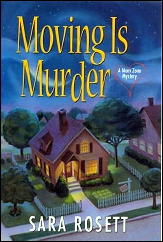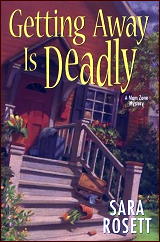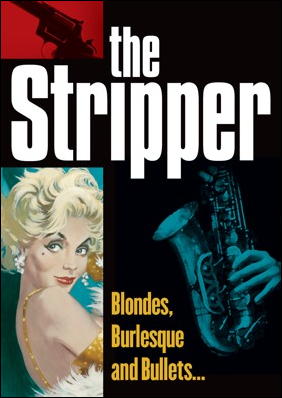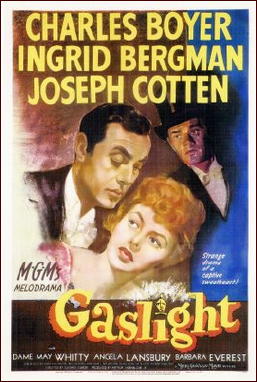May 2010
Monthly Archive
Wed 12 May 2010
Posted by Steve under
Reviews[6] Comments
IT IS PURELY MY OPINION
Reviews by L. J. Roberts
EDWARD MARSTON – The Queen’s Head. St. Martin’s Press, US, hardcover, 1989. Bantam, UK, hardcover, 1988. Paperback reprint: Fawcett Crest, US, 1990.
Genre: Historical mystery. Series character: Nicholas Bracewell, 1st in series. Setting: London-Elizabethan/1500s.
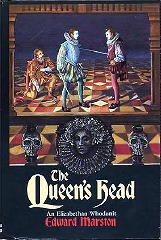
First Sentence: Death stalked her patiently throughout the whole of her imprisonment.
Mary, Queen of Scots, is dead and the Spanish Armada has been defeated. In celebration, Lord Westfield’s Men is preparing to present a new play, “The Loyal Subject.” The company is beset with problems beginning with the death of an actor in a bar brawl.
Nicholas Bracewell, the company’s manager and keeper of the books, was present and promised to find his friend’s killer. As other incidents occur, Bracewell suspects much more is at stake.
After a very dramatic opening, Marston moves on to bring the inner working of Elizabethan theater to life. Some elements — the hard work, competitiveness, jealousies, stagecraft and the disappointment — haven’t changed through time.
It was interesting to learn about the role of the keeper of the books and to learn how special effects were done. The structure of acting companies and the legal and political aspects were very different and made this fascinating.
The sense of time and place are elements I should have liked to have been stronger. It was there but not as evocative as it could have been. However, one of the appeals of stories set in London is that many of the locations still exist today. The inclusion of a map would have been nice.
The dialogue flowed well and did hint to the period. That did help. I like Marston’s characters. Even those who play to stereotype are enough developed that they don’t read flat.
Bracewell is certainly the most developed of the characters and is very interesting. I learned enough about who he is to have gained my empathy, while knowing there is much more I want to learn.
I felt the plot was very well done with a very good flow to it. It certainly kept me interested to where it was one of those books I read straight through. The climactic scene was very well done, even for my having figured it out. However, there is a very good twist on motive and its revelation leads to one of the truest lines written.
While I enjoyed the Elizabethan theater series by Philip Gooden, judging only by this first book, this may be a better series. The second book awaits me.
Rating: Very Good.
Editorial Comment: There are now 16 books in this series. Marston has 44 in all under this pen name, in four different series. He’s also written another eight mysteries under his own name, Keith Miles; two as Martin Inigo; then (amazingly enough) another eight as Conrad Allen.
(When the count gets this high, I start to doubt my math ability. You can do it for yourself by checking out either the author’s own website or the Fantastic Fiction pages for him.)
Wed 12 May 2010
Posted by Steve under
Reviews[4] Comments
IT’S ABOUT CRIME
by Marvin Lachman
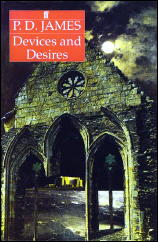
P. D. JAMES – Devices and Desires. Faber & Faber, UK, hardcover, 1989. Alfred A. Knopf, US, hardcover, 1990. Reprinted many times in softcover including Warner, 1992. Six-part TV miniseries, UK, Anglia-ITV, 04 January to 08 February 1991; repeated in the US on Mystery! (PBS, Fall 1991).
– Reprinted from
The MYSTERY FANcier,
Vol. 13, No. 3, Summer 1992.
I read P. D. James’ Devices and Desires before watching it on Mystery! so the television adaptation would not influence my evaluation of the book. It’s good in each medium, though a bit confusing on the screen when one doesn’t have time to reflect on all the characters “thrown” at the viewer, almost at once.
I’ve never met a P. D. James book I didn’t like, and this is no exception. I think she deserves her enormous success because she plots well, creates characters who live, and often creates fine word pictures. For example, here she says that in detective work you get “a jumble of facts like an upturned waste paper basket.”
However, I believe that the success of the television adaptations of her Dalgliesh stories has had a negative effect on her work. She seems to be trying for dramatic effect. Thus, she actually reduces suspense by giving us a flash-forward which discloses who the victims of a serial killer will be.
For the second book in a row, she has an cnding which is very melodramatic. It may play well on the screen — but it is not especially fair play and based on clues. (As James has become successful, she has probably become “above” editing. Thus we get 1880 given as the year of Jack the Ripper, instead of 1888.)
Tue 11 May 2010
Posted by Steve under
Reviews[3] Comments
JOEL TOWNSLEY ROGERS – Lady with the Dice. Handi-Book #56, paperback original, 1946. Ramble House, hardcover/softcover, 2009. No prior publication known.

Rogers was a prolific writer for both the pulp and slick-paper magazines, with hundreds of published stories and a handful of novels between 1920 and 1959, which is why I went searching for an earlier version of Lady with the Dice, but I came up empty.
It reads very much like a pulp story, though, very much in the Cornell Woolrich vein, but Rogers is not nearly as effective as the writer who in my opinion was the ultimate master of overwrought and gripping suspense fiction.
Or noir, if you will. And if you don’t believe in coincidence (see my previous review), then Lady with the Dice is not the book for you.
It’s only 127 pages long, so you can read it in about the time you can watch a noir film of the 1940s — somewhere in between sixty and ninety minutes –- and once you reach the midway point, I guarantee that you’ll read faster and faster, about as fast as you can turn the pages.
Or should I go back and rewrite that as “if you reach the midway point,” as I’m sure that purple prose like this is not for everyone. Here’s a lengthy passage from page 57:
… Clothos, the Spinner, and Atropos, the Cutter, and Lachesis, the most dreadful of them all. Inexorable, immitigable, pitiless, the Caster of the Dice, which even the Fates themselves must obey, and no man can avoid.
But even so, so much was allegory. The idea of there being any sensate and malignant power in the dice themselves which had caused Costovain his losses of the past year was completely ridiculous, of course. Unless he was out of his head, the old man must see that. Costovain had been extraordinarily unlucky in all his gambles, it was true. But there had been no fate in that. That kind of luck or unluck falls like rain on the just and unjust. A man who has thrown craps for twelve months may turn around and throw sevens for the next two years.
Some background. Costovain is the heel who married his last wife for her money, and murdered her for it, a murder officially called a suicide. The “old man” referred to above is her father, now paralyzed and helpless and who cursed him with the vengeance of Lachesis. His daughter died on the twelfth day of the twelfth month on the twelfth stroke of the hour.
It is now one year (twelve months) later, and Costovain has lost his last $1200 on 12 rolls of the dice, throwing boxcars (a pair of sixes) each time. He’s down to his last nickel, good for a single one way subway ride …
Costovain is an utter cad, utter and absolute –believe me on this — nearly dwarfing any villain you can think of, and he deserves his fate – but he’s also extremely clever and may even get away with his latest plan, not knowing that when the Dice are against you, there’s nothing you can do about it. (Look up Lachesis on Wikipedia, for example.)
Oddly compelling in spite of its flaws, slurs against blacks, and only superficial characterization, Lady with the Dice is designed to stick in your mind for a while. No classic by any means, but if you’ve read this far into the review, you just might enjoy the ride.
Previously reviewed on this blog:
The Red Right Hand (by Geoff Bradley)
The Red Right Hand (by Marcia Muller, from 1001 Midnights)
Tue 11 May 2010
SARA ROSETT – Magnolias, Moonlight, and Murder. Kensington, paperback, March 2010; hardcover, April 2009.
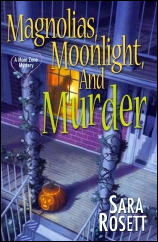
As can easily be deduced from the title, perhaps, this is a cozy mystery novel that takes place in the South, middle Georgia, in fact. Most cozies today have leading characters who solve mysteries involving their hobbies (making quilts or teddy bears) or who run into murders in their everyday line of work, which are usually unusual.
Take Ellie Avery, for example. This is her fourth run-in with murder, but in her everyday life she’s a mother with two small children (lots of diapers!) and a professional organizer (lots of reasons for meeting lots of people, most of who are also suspects).
In Magnolias Ellie discovers the remains of two bodies in one grave unearthed by rain in a cemetery near the house she and her Air Force husband have just moved into. (This, by the way, is another theme of the series: the constant moving from home to home that an Air Force wife has to get used to and endure.)
Neither, however, is the body of the young reporter who’s been missing for several months, Jodi Lockworth, who as it turns out, lived in the house where the Averys are now residing, a fact that gets Ellie involved in another case to solve, much to husband Mitch’s displeasure.
Whether there’s any entertainment factor in this novel for you depends, I would imagine, on you. I found it enjoyable enough to finish, certainly, or I wouldn’t be telling you about it, but I was a trifle disappointed when it came to the detective side of things. There are a couple of cases in Magnolias, somewhat tangentially connected. Ellie’s work as a sleuth is a lot more effective on the minor one.
As to the major one, it takes a telephone clue out of the blue before she can put things to right. Nothing she does on her own, or could have done, would have cracked the case – one that also depends on a huge hummer of a coincidence, now that I’m thinking about it.
One that’s managed in one single swallow, though, or maybe two. Detective and mystery fiction are full of them. Neither can leave home without them.
The Ellie Avery “Mom Zone” Series —
1. Moving Is Murder (2006)
2. Staying Home Is a Killer (2007)
3. Getting Away Is Deadly (2008)
4. Magnolias, Moonlight, and Murder (2009)
5. Mint Juleps, Mayhem, and Murder (2010)
Tue 11 May 2010
Posted by Steve under
Reviews[8] Comments
IT IS PURELY MY OPINION
Reviews by L. J. Roberts
PETER LOVESEY – Bloodhounds. The Mysterious Press, US, hardcover, December 1996; reprint paperback, September 1997. Trade paperback: Soho Crime, December 2004. UK edition: Little Brown, hc, May 1996.
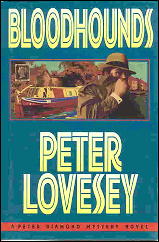
Genre: Police procedural. Series character: Peter Diamond, 4th in series. Setting: Bath UK.
First Sentence: Detective Superintendent Peter Diamond was suffering in the rear seat of a police car scorching toward Bath along the Keynsham bypass with the headlamps on full beam, blue light pulsing and siren wailing.
Peter Diamond is back with the Bath police as a DS in charge of homicide. The media and police receive a poem which seems to indicate that a valuable painting, in the town’s museum, by Turner will be stolen.
Instead, it is the theft of a Penny Black, one of the world’s most valuable stamps. The stamp turns up in the possession of a member of the town’s mystery club, “The Bloodhounds,” and the body of another of the group’s ends up on the suspect’s boat.
Lovesey’s wry humor and use of metaphors is always delightful. In this book, he does a wonderful send-up of book groups and on-line groups, and I thoroughly enjoyed the all the references to mystery authors and their books.
Lovesey provides a very full construction of each character in very few words. He accurately depicts the pettiness, jealousy and fight for power which seem to be part of any group of people. He clearly exemplifies the tendency of those who are insecure to public degrade others in order to feel better about themselves.
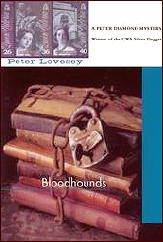
Diamond is a delightful character; he can seem brusque, yet is aware of his flaws and can be kind. I am particularly taken with his very understanding wife, Stephanie, and his young policewoman, Julie Hargraves.
The story provides some interesting, amusing, and lesser known, history about Bath. The inclusion of those small details adds richness to the setting and a variance from the common inclusion of the Roman Baths.
It is not all lightness, however, as there is murder and deception. As a John Dickson Carr fan, I found the set up of doing a locked-room — in this case “boat” — mystery and learning the solution to be fascinating.
The plot was filled with red herrings and twists; so much so, I found the lead-up to the resolution a bit confusing, causing this to not be my favorite book in the series. I do, however, like the characters enough that I shall continue with the series.
Rating: Good Plus.
Editorial Comment: There are now ten novels in the Peter Diamond series, plus a number of short stories he’s also been in. Visit the Peter Lovesey’s website for a complete list of all his fiction, beginning with Wobble to Death in 1970. At the age of 74, he’s still going strong.
Mon 10 May 2010
Posted by Steve under
Reviews[8] Comments
REVIEWED BY WALTER ALBERT:
PAUL DOHERTY – The Spies of Sobeck. Headline, UK, hardcover/softcover, December 2008. St Martin’s, US, hardcover, February 2010.

This is the seventh in Doherty’s dynastic Egyptian mystery series, with Amerotke, Chief Justice of the Hall of Two Truths, attempting to ferret out the instigators of a series of murders that threaten the stability of the regime of Queen Hatusu.
Once again, Doherty recreates the pomp and circumstance of one of the great Egyptian dynasties, highlighted by the vivid characterization of Pharaoh’s Chief Justice.
I will just note, in passing, that I’ve also read, and much enjoyed, the historical trilogy by Doherty that portrays the troubled and brilliant reign of the monotheistic Pharaoh Akenhaten, and that of his successor, Tutankhamen, through the eyes of Mahu, one-time Chief of Police and intimate of both pharaohs.
These are not traditional mysteries, but there are always secrets at the heart of every empire, and Mahu, like Amerotke, is adept at uncovering them. For the record, the three novels are An Evil Spirit Out of the West, The Season of the Hyena, and The Year of the Cobra, all also published by Headline.
Mon 10 May 2010
Posted by Steve under
Reviews[17] Comments
MARGARET MILLAR – Mermaid. William Morrow, hardcover, 1982. Paperback reprint: IPL, 1991.
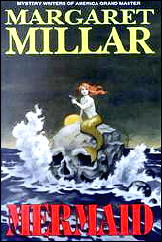
Tom Aragon, whose position as a junior member of a prestigious Southern California law firm has him largely doing legwork for the senior members, occasionally has the opportunity of adding detective duties to his list of chores. He’s no expert at it, by any means, but for an amateur he does pretty well.
This case has to do with a runaway girl — which comes as no surprise, since the west coast must be full of them — but with a difference. Cleo Jasper is a member of a very wealthy family, she is pretty, if not beautiful, and she is exceptional.
Mildly retarded, that is, and just beginning to become aware of her “rights.” As in all good drama, the characters in Millar’s panoramic novels are often a mysterious mixture of the comic with the tragic. While she does not realize it, unfortunately, Cleo Jasper is the supreme archetype of each.
— From The MYSTERY FANcier, Vol. 6, No. 2, March/April 1982.
(This review appeared earlier in the Hartford Courant.)
[UPDATE] 05-10-10. If I were to have written this review today, this afternoon, for example, I’m sure it would have been a whole lot longer. I didn’t have a set word limit when I back when I was writing reviews for the Courant, but I knew that I went way long on one, the others would have to be shorter or would be cut altogether.
One reason for pointing this out is that when it appeared in The MYSTERY FANcier, I added a letter rating of an “A,” and I’m not sure that if I didn’t mention it now, you wouldn’t have known how highly I thought of it. Nor, at this later date, would I, and it’s certainly worth pointing out.
Mon 10 May 2010
REVIEWED BY GEOFF BRADLEY:
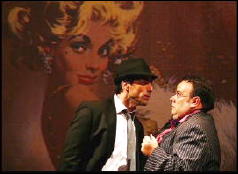
THE STRIPPER. A musical comedy based on the novel of the same title by Carter Brown. Details below:
So there I was, browsing through the local weekly free paper when there was an article about Richard O’Brien, songwriter for The Rocky Horror Show, and how he had a musical being performed at the Queen’s Theatre, Hornchurch.
I idly took in that the production was called The Stripper, and my mind was trying to work out where I had heard that title before as my eyes got to the next bit “based on the book by Carter Brown.”
Now I have spoken before of my attachment, from a relative early age, to the books of Carter Brown, and I quickly made my way up to the Carter Brown section of the loft where I found the 1961 Signet edition of the book (reviewed here ).

I quickly found the Queen’s Theatre website and booked tickets for the Saturday matinee and then set to re-reading the book. Travel to Hornchurch, about 25 miles away, was very convenient by train so Helen and I had a leisurely journey followed by lunch in Hornchurch and a walk to the theatre.
I bought a programme and read that Richard O’Brien had read lots of Carter Brown’s books. On entering the theatre, the first thing to see was a large rectangular book-shaped screen with, projected on to it, the Signet cover.
As the show started the projection changed to the outside of the 15th floor of the hotel with Patty Keller perched on the ledge. From then on the action followed the book faithfully (although Sergeant Polnik is, unfortunately relegated to a walk-on part and, for some reason, Sherry Rand of the book is renamed as Sherry Mendez), with huge chunks of dialogue lifted verbatim until an understandable alteration to the ending that changed setting and timing but not culprits.
This was interspersed with song whose lyrics would not, perhaps, compete on a Cole Porter level, but worked in the more lowly context of Carter Brown. A six piece band (with trumpet, sax and piano prominent), sited on a raised platform at the back of the stage, were excellent, playing the jazz-tinged score.
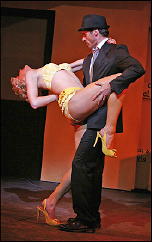
Jonathan Wrather was terrific as Al Wheeler and Morgan Deare made a very acceptable Sheriff Lavers. Richard O’Brien, himself, took the role of Arkwright but the stand-out performance was perhaps Jack Edwards as Harvey Stem, in particular when his corpse rose up to sing the contents of his supposed suicide note, “I Confess.”
Music was written by Richard Hartley, lyrics by Richard O’Brien and Carter Brown was credited, quite rightly, with the book.
Richard O’Brien says in the programme that he was asked to write a musical for the Sydney Theatre Company back in 1980 and being familiar with the works of Carter Brown, a chance meeting with his daughter, turned his thoughts to using a Brown book as the source material. He originally intended, he says, to write another rock’n’roll musical but came to realise that Brown’s characters were more likely to listen to Ella Fitzgerald and Sinatra.
After the performance, Helen (on my behalf, I’m a bit shy in that regard) asked if there were any spare posters for the production lying around and eventually a very kind lady produced one for me. At that point she said why don’t you get Richard O’Brien to sign it, he’s just coming down the corridor.
So as I asked O’Brien to sign my poster, I confessed that I had been a Carter Brown reader since my adolescence. He told me that he had met Brown (Alan Yates) and had got to know his family quite well. Also that it was his copy of The Stripper (Signet, 1961) that had been used on for the pre-show image that was projected on to the book shaped screen.
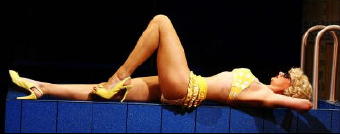
It wasn’t until I got home that further reading in the programme told me that he owned a lot of “pulp fiction” and he had collected it for years.
A spot of Googling enabled me to find details of the original production in Sydney with one site listing all the original lyrics (though there had obviously been some revision since Polnik has a song in the original) and another on which the soundtrack LP could be listened to.
I have to say that the whole production was excellent. The scene changes were smoothly and cleverly done, the cast were excellent, the songs were witty and the music enjoyable. The production, for which the best single word to describe it is perhaps ‘fun,’ was enthusiastically received by the audience and both I, as a Carter Brown veteran wanting a faithful interpretation of the book, and Helen, with no interest in the Brown or the comedy-pulp sub-genre, both thoroughly enjoyed the whole performance.
Editorial Comment: The webpage for the Queen’s Theatre production appears to have been archived, so perhaps the link will stay active for a while.
Sun 9 May 2010
A MOVIE REVIEW BY DAVID L. VINEYARD:
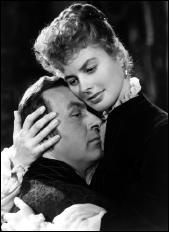
GASLIGHT. MGM, 1944. Ingrid Bergman, Charles Boyer, Joseph Cotton, Dame May Whitty, Angela Lansbury, Terry Moore. Based on the play Angel Street by Patrick Hamilton. Director: George Cukor.
“Don’t you see, your whole life depends on what your are going to do now, nothing less than your whole life.”
It’s hardly necessary to go into much detail about the plot of this classic. Bergman is the daughter of a famous actress who was murdered and her jewels disappeared. Now she is married to the haughty and somewhat overly protective Charles Boyer, whose personality is as changeable as the weather — at one moment cloyingly concerned, at another insanely angry over the smallest of things — warm and affectionate at one turn, icy and cruel at another.
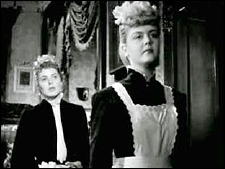
Into the mix is added the wonderful Angela Lansbury in her film debut at only seventeen as a house servant of notable disrespect, and Joseph Cotton as a young man who works at Scotland Yard and suspects something is not right in the supposedly happy household.
This is actually the second film of the play. It originated in London’s West End and then came to Broadway with Vincent Price in the Boyer role. In 1940 a British version of the play was made with Anton Walbrook, Diana Wynyard, Robert Newton, and Frank Pettingwell. In all fairness, this version is superior to the American version, and I don’t just say that because Diana Wynyard is a cousin. It is less static than the American version, with electrical performances and a fine sense of slowly dawning horror and madness.
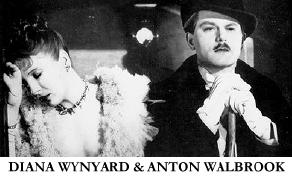
But the familiar version we are discussing here is a fine piece of film making with merits of its own. Bergman, Boyer, and Lansbury are at the top of their form (Bergman won an Oscar, though it may have been a consolation prize for the previous year’s Casablanca and For Whom The Bell Tolls), and Boyer seldom had a role as juicy as this (not even as Napoleon in Conquest with Greta Garbo). It’s hard to believe Lansbury’s assured and saucy performance is being given by a seventeen year old girl.
Gaslight is a psychological drama that turns on Boyer gradually driving Bergman mad so he can have free access to the house they share where her murdered mother’s fortune in jewels is hidden. The fine irony is that Boyer himself is insane and with each twist of the noose going madder north by northwest than Hamlet on uppers himself, so the finale when he has broken Bergman and she turns on him as Cotton’s Scotland Yard man waits is beautifully staged melodrama.
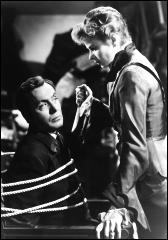
“Are you suggesting this is a knife in my hand? Have you gone mad, my husband?”
Cotton’s role in the film is much expanded from the play where Leo G. Carroll played the role as a much less romantic figure.
Patrick Hamilton specialized in these overheated psychological dramas. Hangover Square is only a little less potent than Gaslight and an excellent film in itself directed by John Brahm and starring George Sanders and Laird Cregar, with Cregar’s concert pianist going mad by delightfully increasing murderous degrees. Hamilton also penned some all too seldom read novels that prefigure some aspects of Patricia Highsmith’s Tom Ripley novels though in a different vein.
Gaslight is perhaps too familiar to have the impact it originally did on screen. The plot has become such a staple that the film has lost some of its glow, but it is still a fine piece of melodrama, and Bergman’s gradual descent into madness, and her worm turns scene when she realizes Boyer has been trying to kill her still has power.
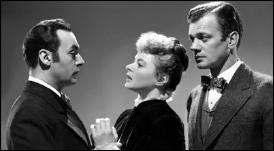
And while much of the attention has rightfully gone to Bergman and Lansbury, Boyer has a field day with his own descent into obsession and madness, though he lost out in the Oscar race to Bing Crosby’s singing priest in Going My Way.
To give some idea of the impact of both play and film, there are few people even today who would fail to recognize the term ‘gaslighting’ as a metaphor for driving someone mad, even if they have never seen or heard of the film or play. It’s not often a film enters so firmly into the public consciousness.
“In the morning when the sun rises you’ll find it hard to believe there ever was a night.”
[UPDATE] 05-11-10. The 1944 version of Gaslight will be shown on TCM next Friday (May 14) at 10:30 am.
Sun 9 May 2010
Posted by Steve under
Reviews[3] Comments
Reviewed by MIKE GROST:
JAMES WARREN – The Disappearing Corpse. Ives Washburn, US, hardcover, 1958. Original published in the UK as The Runaway Corpse, hc, Collins Crime Club, 1957.
James Warren is a late representative of the Golden Age puzzle plot story. His first mystery novel She Fell Among Actors (1944) was praised by Anthony Boucher.
The Disappearing Corpse is a comic detective novel. The comedy is fairly gentle, poking fun at a bunch of eccentric characters in a tiny English town near Dartmoor.
The book is consistently funny. The outrageously dated Victorian house is a good subject of satire. The bad weather is also a subject of much vivid comic and atmospheric writing.
Most of the characters have actually moved into the district from London. While Warren makes them a target for humor, as well as the local roads and weather, he is careful not to ridicule the locals or Dartmoor culture. The book is lacking in malice, or anything that smacks of prejudice.
The main murder problem in The Disappearing Corpse has an ingenious solution. So does the subplot about the antiques the hero is brought in to investigate. Both mystery puzzles have antecedents in Agatha Christie: not exact re-uses of plot ideas, one hastens to add, but plots in broadly similar kinds of traditions. (SPOILER: The antiques subplot recalls such Christie tales as the Mr. Quin “At the Bells and Motley” (1925) and the Miss Marple “Ingots of Gold” (1928). END OF SPOILER.)
But there are also some plot problems:
The disappearing corpse of the title is given the flimsiest of motives for its kidnapping. We are also asked to follow the wanderings of the corpse and its heisters in detail — but none of this ever amounts to a plot of much substance. They just seem like random, if funny, wanderings.
Strange, hard to explain footprints show up early. But they are never mentioned again, let alone given any sort of explanation. When we first encounter the prints, it looks as if the book is going to be some kind of Impossible Crime novel. But it is not.
The subplot of the bundle of clothes never makes too much sense.
The description of a rural gasoline/petrol pump is unexpectedly interesting (Chapter Three). It is the kind of social or technological detail that sometimes turns up in mysteries.
A year after its British publication, The Disappearing Corpse was brought out in the United States. There is a comment on the back of the book jacket from the Denver Post, describing its US publisher: “Ives Washburn has recently launched the Chanticleer series of mystery novels, at the rate of one a month. The covers are sturdy and attractively designed; the print is large and legible. The novels remind one of Christie or Queen. Intelligence, individuality of style and plotting.”
Editorial Comment: Some information about the author, James Warren, and who the man was behind the pen name can be found here on the main Mystery*File website.
« Previous Page — Next Page »




